“People say – and I’m quite willing to believe it – that it’s difficult to know oneself – but it’s not easy to paint oneself either.” The famous ‘Mad Genius,’ with his famous self-portraits, Vincent van Gogh’s life had been a series of eccentricities and struggles.
He primarily reveled in illustrating landscapes and flowers, but his need to understand oneself always repurchased him to the path of portraits.
Van Gogh relied on painting self-portraits because he didn’t have enough money to hire models. It is these famous portrait paintings that tell us so much about his appearance.
Strokes, swirls, and stripes characterize Van Gogh’s paintings, and his countenance remains concentrated and restrained. If you are curious about how he did it, read this in-depth guide on oil portrait painting.
Between 1886 and 1889, he painted over 30 self-portraits, some of which hauntingly illustrate the trials and tribulations that life threw his way. Let’s examine some of them, shall we?
Portraits of Vincent Van Gogh
Self-portrait with grey felt hat, 1887
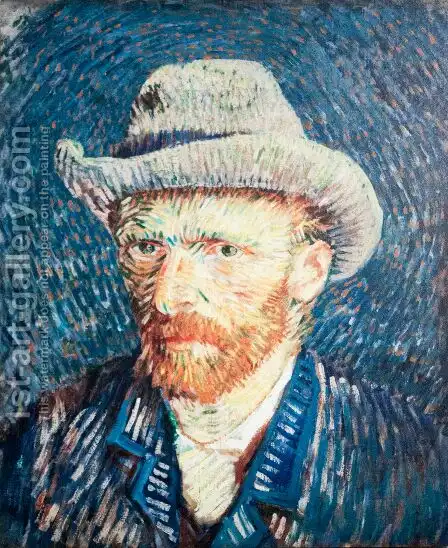
Van Gogh painted most of his self-portraits in Paris. And The “Self-portrait with Grey Felt Hat” is his attempt to portray himself as an intelligent and city man. This art portrait, painted during the winter of 1887-1888, draws inspiration from the Pointillist technique of Neo-Impressionism. However, Van Gogh twisted it according to his whims and style.
The brushstrokes are limited and short and are scattered in different directions. Even the color combination is anything but systematic. The face and hat have directional brush strokes, defining and detailing them with great precision and volume. The background consists of deep navy blue, with the short stripes outlining his head in a spiral pattern, giving the illusion of a halo.
Self-portrait with bandaged ear, 1889
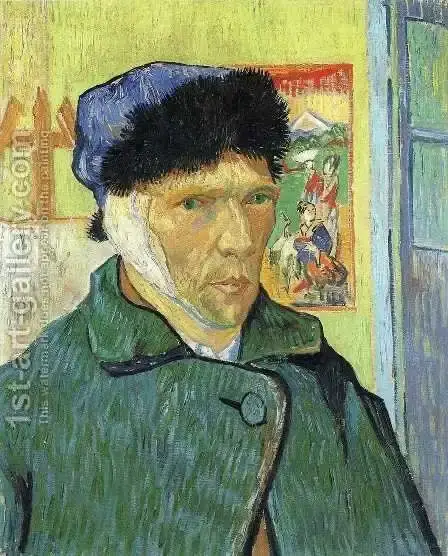
Apart from struggling with mental illness, Van Gogh was diagnosed with epilepsy in his later life. Then, in a tragic episode fueled by rage following his fight with a friend and fellow artist, Paul Gauguin, Van Gogh mutilated his ear. “Self-Portrait with Bandaged Ear” was painted in January 1889, after the painter left the hospital.
Van Gogh illustrated himself in the Yellow House, where he and Gauguin lived together before Gauguin boarded the train to Paris. The ashen tones coupled with pale green shades are his way of weaving a tale that hurt Van Gogh in the greatest, as his dreams of setting up a ‘studio in the south’ with Gauguin remained unfulfilled.
The painter painted his portrait through a mirror, which clarifies why his right ear is bandaged when in reality, Van Gogh cut off his left ear. His green overcoat and fur cap are an indication of the harsh conditions of winter. The portrait is also a testament to Van Gogh’s determination to return to art, implied by the blank canvas and the Japanese print in the background.
Self-portrait with dark felt hat at the easel, 1886
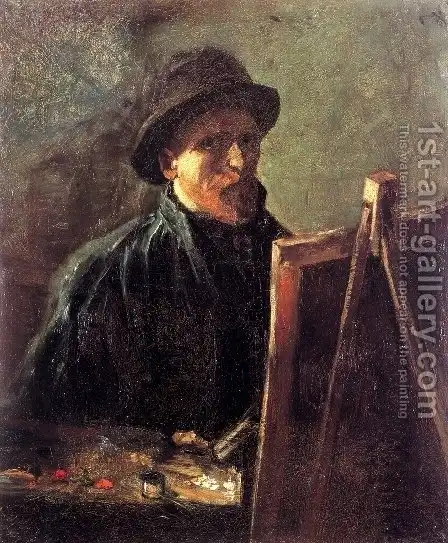
When Van Gogh arrived in Paris to share an apartment with his brother, Theo, Van Gogh got to train in art schools in the Netherlands and Antwerp. However, his pace and compatibility didn’t match with his fellow students, because of which Van Gogh was left searching for respect and appreciation.
His “Self-Portrait with Dark Felt Hat at the Easel,” consisting of a dark undertone overall, was an attempt to paint himself as someone he wanted everyone else to see. Nowadays it is evident that finding Van Gogh paintings for sale is very desirable, even in the form of painting reproductions.
This was the first painting portrayed by an artist, which Van Gogh tried to accentuate with a hat. He holds a palette in his hand, covered with varied splotches of colors. A blank canvas sits opposite him, and Van Gogh stares at the viewer with a look of professional graveness.
Self-portrait with pipe and straw hat, 1888
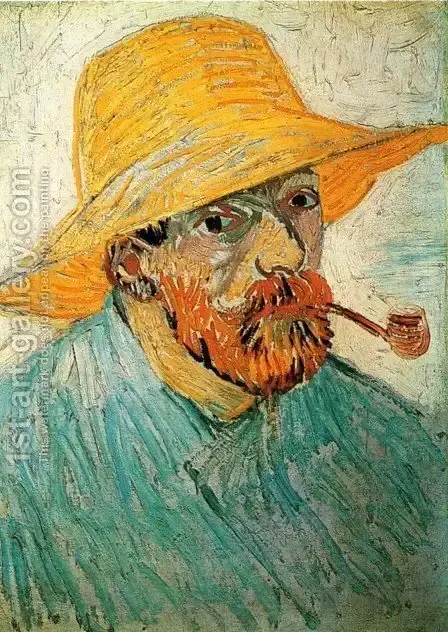
Van Gogh painted “Self-Portrait with Pipe and Straw Hat” in 1888, shortly before his departure to Arles. Van Gogh already imagined himself embodying the aura of the South and painted himself as such. The light and loose brushstrokes of his blue shirt and yellow hat give off a casual and summery vibe.
The background consists of shaded, outlined areas of solid pale color. Van Gogh is depicted as smoking a pipe, which is his favorite prop beside the hat. The saturated quality of the painting enhances the nuisances of the South, which Van Gogh was eager to explore.
Self-portrait, 1889
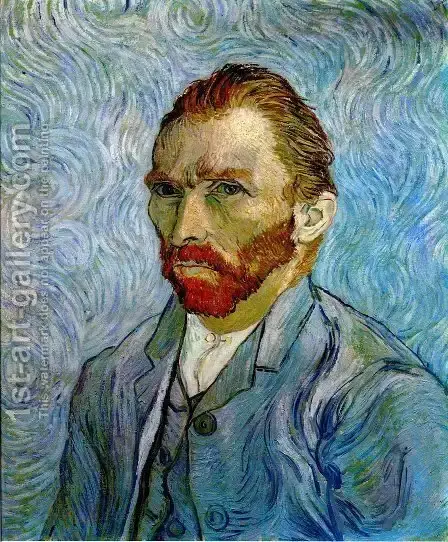
Van Gogh’s last and the greatest, “Self-Portrait,” was painted in September 1889, just months before his death. The background resembles the dark, navy curves of the “Starry Night” and constitutes a masterly control over a fixed rhythm.
His red hair and beard are illustrated with short, precise strokes, and his gaunt features and intense gaze are compact and defined. His green-tinged face adds a contrast of color, embodying the avidity and delicacy of his life.
Conclusion
Van Gogh believed that his paintings helped him to heal. More of his famous self-portraits and other masterpieces are stationed at the 1st Art Gallery, which is also the world’s largest supplier of Made-to-Order Oil Paintings. So explore these art portraits and unravel the world of this ‘Mad Genius.
